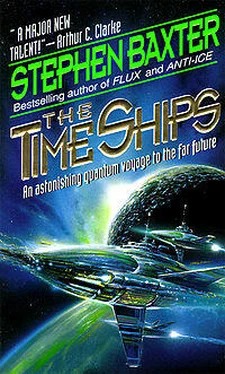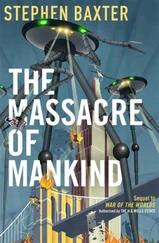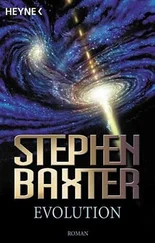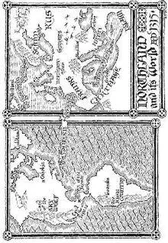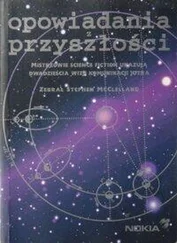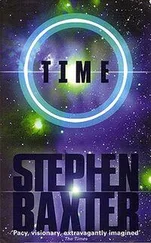“The ’wind’ comes from beams of coherent light, generated by earthbound projectors as wide as a city,” he said. “It is these beams which you have observed as ’threads’ joining planet to sail. The pressure of the light is small but insistent, and it is extraordinarily efficient in transferring momentum — especially as light speed is approached.”
He imagined that the Constructors would not sail upon such a ship as discrete entities, as had the passengers of the great ships of my day. Rather, the Constructors might have disassembled themselves, and allowed their components to run off and knit themselves into the ship. At the destination, they would reassemble as individual Constructors, in whatever form was most efficient for the worlds they found there.
“But where is the space yacht’s destination, do you think? The moon, or one of the planets — or—”
In his flat, undramatic Morlock way, Nebogipfel said: “No. The stars.”
[6]
The Multiplicity Generator
Nebogipfel continued his experiments with the billiards table. Repeatedly the ball would encounter that peculiar clattering I had observed about the middle of the table, and several times I thought I saw billiard balls — more copies of our original — appearing from nowhere and interfering with the trajectory of our ball. Sometimes the ball emerged from these collisions and continued along the path it might have followed regardless of the clattering-about; sometimes, though, it was knocked onto quite a different path, and — once or twice — we observed the type of incident I described earlier, in which a stationary ball was knocked out of its place, without my, or Nebogipfel’s, intervention.
This all made for an entertaining game — and clearly something fishy was going on — but for the life of me I could not see it, despite that hint of Plattnerite glow about the pockets. My only observation was that the slower the ball traveled, the more likely it was to be diverted from its path.
The Morlock, though, grew gradually more excited about all this. He would immerse himself in the hide of the patient Constructor, delving once more into the Information Sea, and emerge with some new fragment of knowledge he’d fished up — he mumbled to himself in that obscure, liquid dialect of his kind — and then he would hurry straight to the billiards table, there to test his new understanding.
At last, he seemed ready to share his hypotheses with me; and he summoned me from my steam bath. I dried myself on my shirt and hurried after him to the Billiards Room; his small, narrow feet pattered on the hard floor as he half-ran back to the table. He was as excited as I could remember seeing him.
“I think I understand what this table is for,” he said, breathless.
“Yes?”
“It is — how can I express it? — it is only a demonstration, little more than a toy but it is a Multiplicity Generator. Do you see?”
I held up my hands. “I fear I don’t see a thing.”
“You are familiar enough with the idea of the Multiplicity of Histories, by now…”
“I should be; it’s the basis of your explanation of the divergent Histories we have visited.”
At every moment, in every event (I summarized), History bifurcates. A butterfly’s shadow may fall here or there; the assassin’s bullet may graze and pass on without harm, or lodge itself fatally in the heart of a King… To each possible outcome of each event, there corresponds a fresh version of History. “And all of these Histories are real,” I said, “and — if I understand it right they lie side by side with each other, in some Fourth Dimension, like the pages of a book.”
“Very well. And you see, also, that the action of a Time Machine — including your first prototype — is to cause wider bifurcations, to generate new Histories… some of them impossible without the Machine’s intervention — like this one!” He waved his hands about. “Without your machine, which started off the whole series of events, humans could never have been transported back to the Palaeocene. We should not now be sitting on top of fifty million years of intelligent modification of the cosmos.”
“I see all that,” I said, my patience wearing thin. “But what has it to do with this table?”
“Look.” He set the single ball rolling across the table. “Here is our ball. We must imagine many Histories — a sheaf of them — fanning out around the ball at every moment. The most likely History, of course, is the one containing the classical trajectory — meaning a straightforward roll of the ball across the table. But other Histories — neighboring, but some widely divergent — exist in parallel. It is even possible, though very unlikely, that in one of those Histories the thermal agitation of the ball’s molecules will combine, and cause it to leap up in the air and hit you in the eye.”
“Very well.”
“Now—” He ran his finger around the rim of the nearest pocket. “This green inlay is a clue.”
“It is Plattnerite.”
“Yes. The pockets act as miniature Time Machines — limited in scope and size, but quite effective. And, as we have seen from our own experience, when Time Machines operate — when objects travel into future or past to meet themselves — the chain of cause and effect can be disrupted, and Histories grow like weeds…”
He reminded me of the odd incident we had witnessed with the stationary ball. “That was, perhaps, the clearest example of what I am describing. The ball sat at rest on the table — our ball, we will call it. Then a copy of our ball emerged from a pocket, and knocked our ball aside. Our ball traveled to the cushion, rebounded, and fell into the pocket, leaving the copy at rest on the table, in the precise position of the original.
“Then,” Nebogipfel said slowly, “our ball traveled back through time — do you see? — and emerged from the pocket in the past…”
“And proceeded to knock itself out of the way, and took its own place.” I stared at the innocent-looking table. “Confound it, I see it now! It was the same ball after all. It was resting quite happily on the table — but, because of the bizarre possibilities of time travel, it was able to loop through time and knock itself aside!”
“You have it,” the Morlock said.
“But what made the ball start moving in the first place? Neither of us gave it a shove towards the pocket.”
“A ’shove’ was not necessary,” Nebogipfel said. “In the presence of Time Machines — and this is the point of the demonstration, really — you must abandon your old ideas of causality. Things are not so simple! The collision with the copy was just one possibility for the ball, which the table demonstrated for us. Do you see? In the presence of a Time Machine, causality is so damaged that even a stationary ball is surrounded by an infinite number of such bizarre possibilities. Your questions about ’how it started’ are without meaning, you see: it is a closed causal loop — there was no First Cause.”
“Maybe so,” I said, “but look here: I still have an uneasy feeling about all this. Let’s go back to the two balls on the table again — or rather, the one real ball and its copy. Suddenly, there is twice as much material present as there was before! Where has it all come from?”
He eyed me. “You are worried about the violation of Conservation Laws — the appearance, or disappearance, of Mass.”
“Exactly.”
“I did not notice any such concern when you dived into time in search of your younger self. For that was just as much — more! — of a violation of any Conservation Principle.”
Читать дальше
Конец ознакомительного отрывка
Купить книгу
